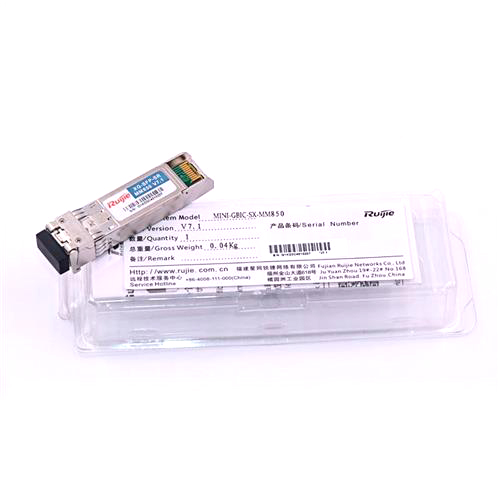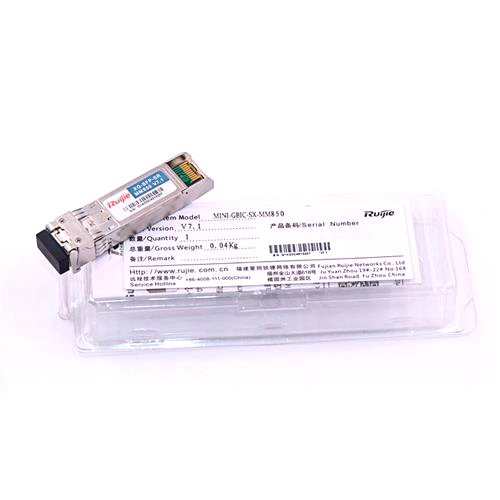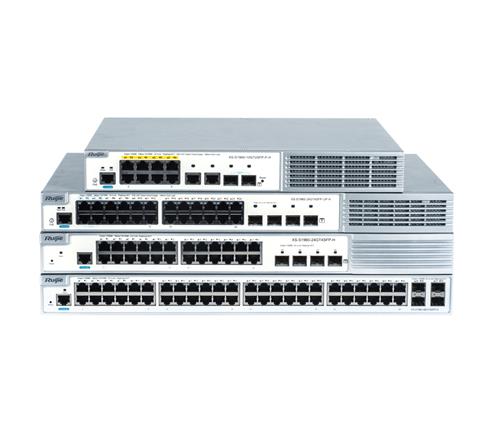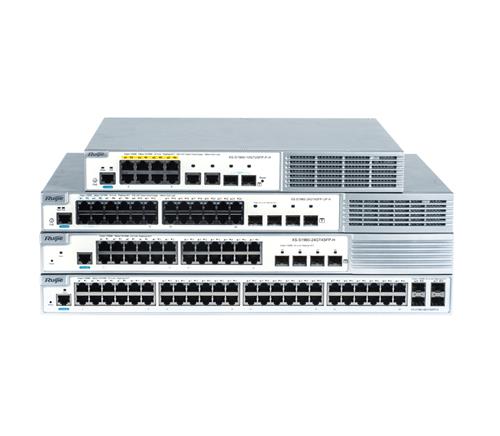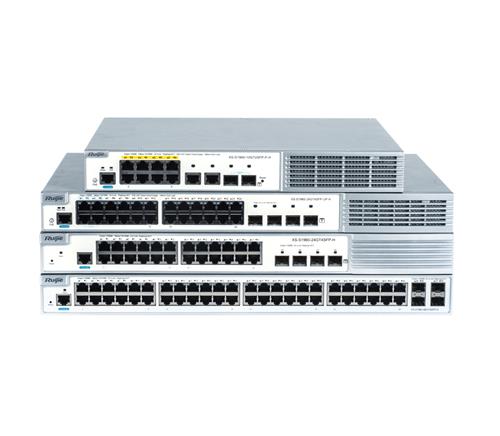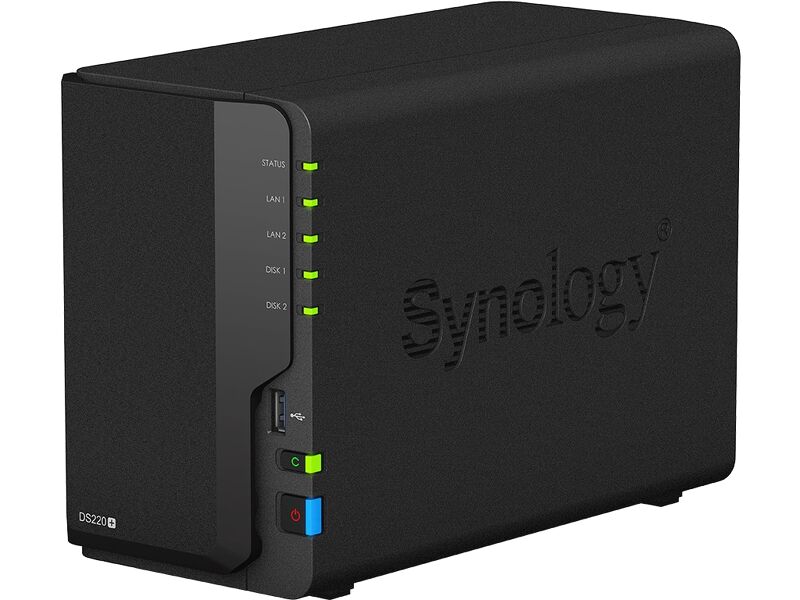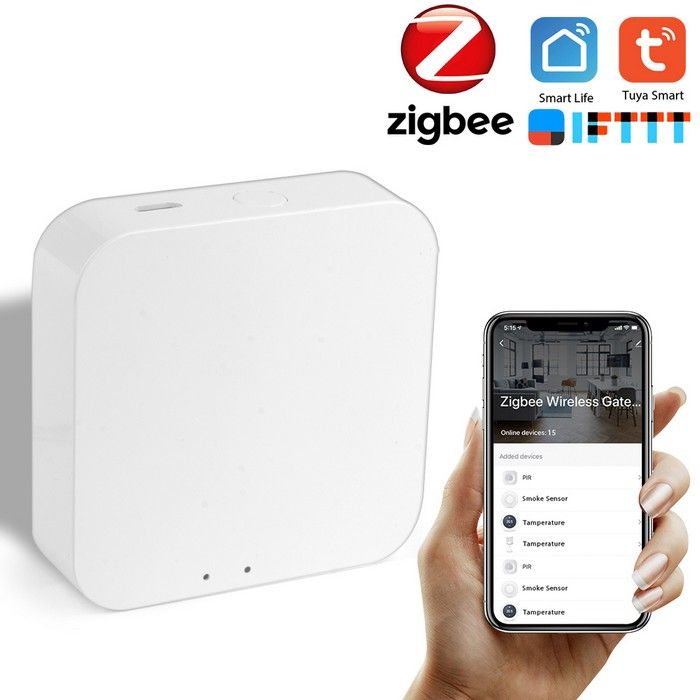|
Rate
|
Standard
|
SFP Product Model
|
|
Ethernet
FE
|
Long wavelength / long distance
100Base-FX
|
FE-SFP-LX-MM1310
FE-SFP-LX-MM1310-SGMII
FE-SFP-LH15-SM1310
FE-eSFP-LH15-SM1310
FE-SFP-LH20-SM1310-SGMII
FE-SFP-LX20-SM1310-BIDI
FE-SFP-LX20-SM1550-BIDI
FE-SFP-LH40-SM1310-BIDI
FE-SFP-LH40-SM1550-BIDI
|
|
Ethernet
GE
|
Short wavelength
1000Base-SX
|
MINI-GBIC-SX-MM850
GE-eSFP-SX-MM850
GE-SFP-SX
GE-SFP-SX-SM1550-BIDI
GE-SFP-SX-SM1310-BIDI
|
|
Long wavelength / long distance
1000Base-LX/LH
|
MINI-GBIC-LX-SM1310
GE-SFP-LX
GE-eSFP-LX-SM1310
GE-SFP-LX-SM1310
MINI-GBIC-LH40-SM1310
GE-SFP-LX20-SM1310-BIDI
GE-SFP-LX20-SM1550-BIDI
GE-SFP-LH40-SM1310-BIDI
GE-SFP-LH40-SM1550-BIDI
|
|
Long wavelength / extended distance
1000Base-ZX
|
MINI-GBIC-ZX50-SM1550
MINI-GBIC-ZX80-SM1550
MINI-GBIC-ZX100-SM1550
|
|
SDH interface
155.52Mbps
|
Short wavelength
|
SDH155-SFP-SX-MM850
SDH155-SFP-SX-MM1310
|
|
Long wavelength / long distance
|
SDH155-SFP-LH15-SM1310
|
|
Long wavelength / extended distance
|
SDH155-SFP-LH40-SM1310
SDH155-SFP-LH80-SM1550
|
Table 2 Models of the Copper SFP Module.
|
Standard
|
1000Base-T SFP Product Model
|
|
1000Base-T
|
MINI-GBIC-GT
|
 The types/models of MINI-GBIC and SFP series modules are beingupdated. If more accurate models of the module are required, please contactRuijie marketing staff or technical support engineers.
The types/models of MINI-GBIC and SFP series modules are beingupdated. If more accurate models of the module are required, please contactRuijie marketing staff or technical support engineers.
Table 3 Pairing Models of the SFP BIDI Module
|
Rate/Distance
|
Paring Models
|
|
100M/20km
|
FE-SFP-LX20-SM1310-BIDI
FE-SFP-LX20-SM1550-BIDI
|
|
100M/40km
|
FE-SFP-LH40-SM1310-BIDI
FE-SFP-LH40-SM1550-BIDI
|
|
1000M/500m
|
GE-SFP-SX-SM1310-BIDI
GE-SFP-SX-SM1550-BIDI
|
|
1000M/20km
|
GE-SFP-LX20-SM1310-BIDI
GE-SFP-LX20-SM1550-BIDI
|
|
1000M /40km
|
GE-SFP-LH40-SM1310-BIDI
GE-SFP-LH40-SM1550-BIDI
|
 BIDI modules must be used in pairs. If FE-SFP-LX20-SM1310-BIDI is used at one end, then FE-SFP-LX20-SM1550-BIDI must be applied to the other end.
BIDI modules must be used in pairs. If FE-SFP-LX20-SM1310-BIDI is used at one end, then FE-SFP-LX20-SM1550-BIDI must be applied to the other end.
Table 4 Temperature/Humidity Requirements of Dual-fiber SFP Modules and Copper SFP Modules
|
Operating Temperature
|
0ºC to 70ºC
|
|
Storage Temperature
|
-40ºC to 85ºC
|
|
Relative Humidity
|
10% to 90%
|
Table 5 Temperature/Humidity Requirements of BIDI SFP Modules
|
Operating Temperature
|
-40ºC to 85ºC
|
|
Storage Temperature
|
-40ºC to 85ºC
|
|
Relative Humidity
|
5% to 95%
|
1.3 Models and Technical Specifications
Table 6 Models and Technical Specifications of the SFP Module
|
SFP Model
|
Wavelength
(nm)
|
Optical Fiber Type
|
DDM
(Yes/No)
|
Intensity of Transmitted Light / dBm
|
Intensity of Received Light / dBm
|
|
|
MIN
|
MAX
|
MAX
|
MIN
|
|
|
FE-SFP-LX-MM1310
|
1310
|
MMF
|
Yes
|
-22
|
-14
|
-30
|
-14
|
|
|
FE-SFP-LX-MM1310-SGMII
|
1310
|
MMF
|
No
|
-20
|
-15
|
-28
|
-8
|
|
|
FE-SFP-LH15-SM1310
|
1310
|
SMF
|
Yes
|
-15
|
-8
|
-28
|
-8
|
|
|
FE-SFP-LH20-SM1310-SGMII
|
1310
|
SMF
|
No
|
-15
|
-8
|
-28
|
-8
|
|
|
FE-SFP-LX20-SM1310-BIDI
|
1310TX/1550RX
|
SMF
|
Yes
|
-15
|
-7
|
-28
|
-8
|
|
|
FE-SFP-LX20-SM1550-BIDI
|
1550TX/1310RX
|
SMF
|
Yes
|
-15
|
-7
|
-28
|
-8
|
|
|
FE-SFP-LH40-SM1310-BIDI
|
1310TX/1550RX
|
SMF
|
Yes
|
-7
|
-2
|
-32
|
-8
|
|
|
FE-SFP-LH40-SM1550-BIDI
|
1550TX/1310RX
|
SMF
|
Yes
|
-7
|
-2
|
-32
|
-8
|
|
|
FE-eSFP-LH15-SM1310
|
1310
|
SMF
|
Yes
|
-15
|
-8
|
-28
|
-8
|
|
|
MINI-GBIC-SX
|
850
|
MMF
|
No
|
-9.5
|
-3
|
-17
|
0
|
|
| |
|
MINI-GBIC-LX
|
1310
|
SMF
|
No
|
-9.5
|
-3
|
-20
|
-3
|
|
|
GE-eSFP-SX-MM850
|
850
|
MMF
|
Yes
|
-9.5
|
-3
|
-17
|
0
|
|
| |
|
GE-eSFP-LX-SM1310
|
1310
|
SMF
|
Yes
|
-9.5
|
-3
|
-20
|
-3
|
|
|
GE-SFP-LX-SM1310
|
1310
|
SMF
|
No
|
-9.5
|
-3
|
-20
|
-3
|
|
|
MINI-GBIC-LH40
|
1310
|
SMF
|
Yes
|
-2
|
3
|
-22
|
-3
|
|
|
GE-SFP-SX-SM1310-BIDI
|
1310
|
MMF
|
No
|
-10
|
-5
|
-17
|
-3
|
|
|
GE-SFP-SX-SM1550-BIDI
|
1550
|
MMF
|
No
|
-10
|
-5
|
-17
|
-3
|
|
|
GE-SFP-LX20-SM1310-BIDI
|
1310TX/1550RX
|
SMF
|
Yes
|
-9
|
-3
|
-20
|
-3
|
|
|
GE-SFP-LX20-SM1550-BIDI
|
1550TX/1310RX
|
SMF
|
Yes
|
-9
|
-3
|
-20
|
-3
|
|
|
GE-SFP-LH40-SM1310-BIDI
|
1310TX/1550RX
|
SMF
|
Yes
|
-5
|
0
|
-24
|
-1
|
|
|
GE-SFP-LH40-SM1550-BIDI
|
1550TX/1310RX
|
SMF
|
Yes
|
-5
|
0
|
-24
|
-1
|
|
|
MINI-GBIC-ZX50
|
1550
|
SMF
|
Yes
|
-5
|
0
|
-22
|
-3
|
|
|
MINI-GBIC-ZX80
|
1550
|
SMF
|
Yes
|
0
|
4.7
|
-22
|
-3
|
|
|
MINI-GBIC-ZX100
|
1550
|
SMF
|
Yes
|
0
|
5
|
-30
|
-9
|
|
|
SDH155-SFP-SX-MM850
|
850
|
MMF
|
No
|
-10
|
-4
|
-25
|
0
|
|
|
SDH155-SFP-SX-MM1310
|
1310
|
MMF
|
No
|
-20
|
-14
|
-30
|
-14
|
|
|
SDH155-SFP-LH15-SM1310
|
1310
|
SMF
|
No
|
-15
|
-8
|
-28
|
-8
|
|
|
SDH155-SFP-LH40-SM1310
|
1310
|
SMF
|
No
|
-5
|
0
|
-34
|
-8
|
|
|
SDH155-SFP-LH80-SM1310
|
1310
|
SMF
|
No
|
-5
|
0
|
-34
|
-8
|
|
|
SDH155-SFP-LH80-SM1550
|
1550
|
SMF
|
No
|
-5
|
0
|
-34
|
-8
|
|
|
Mini-GBIC-GT
|
NA
|
RJ45 cable
|
No
|
N/A
|
N/A
|
N/A
|
N/A
|
|
|
GE-SFP-SX
|
850
|
MMF
|
No
|
-9.5
|
-3
|
-17
|
0
|
|
|
GE-SFP-LX
|
1310
|
SMF
|
No
|
-9.5
|
-3
|
-20
|
-3
|
|
 Based on the specifications of received light intensity, install anattenuator at the link to avoid damage to the following optical modules when usingshort optical fibers: FE-SFP-LX20-SM1310-BIDI, FE-SFP-LX20-SM1550-BIDI, FE-SFP-LH40-SM1310-BIDI,FE-SFP-LH40-SM1550-BIDI, GE-SFP-LH40-SM1310-BIDI, GE-SFP-LH40-SM1550-BIDI, MINI-GBIC-LH40-SM1310,MINI-GBIC-ZX50-SM1550, MINI-GBIC-ZX80-SM1550, MINI-GBIC-ZX100-SM1550, SDH155-SFP-LH40-SM1310and SDH155-SFP-LH80-SM1550.
Based on the specifications of received light intensity, install anattenuator at the link to avoid damage to the following optical modules when usingshort optical fibers: FE-SFP-LX20-SM1310-BIDI, FE-SFP-LX20-SM1550-BIDI, FE-SFP-LH40-SM1310-BIDI,FE-SFP-LH40-SM1550-BIDI, GE-SFP-LH40-SM1310-BIDI, GE-SFP-LH40-SM1550-BIDI, MINI-GBIC-LH40-SM1310,MINI-GBIC-ZX50-SM1550, MINI-GBIC-ZX80-SM1550, MINI-GBIC-ZX100-SM1550, SDH155-SFP-LH40-SM1310and SDH155-SFP-LH80-SM1550.
 The optical module is a laser device. Please take care of your eyes and do not look into the laser beam directly.
The optical module is a laser device. Please take care of your eyes and do not look into the laser beam directly.
 To keep the optical module clean, please make sure that the dust cap is mounted when it is not connected to a fiber cable.
To keep the optical module clean, please make sure that the dust cap is mounted when it is not connected to a fiber cable.
Table 7 Module Cabling Specifications
|
SFP Model
|
Connector Type
|
Optical Fiber Type
|
Core Specification (um)
|
Maximum Cabling Distance
|
|
| |
|
FE-SFP-LX-MM1310
|
LC
|
MMF
|
62.5/125
|
2 km
|
|
|
FE-SFP-LX-MM1310-SGMII
|
LC
|
MMF
|
62.5/125
|
2 km
|
|
|
FE-SFP-LH15-SM1310
|
LC
|
SMF
|
9/125
|
15 km
|
|
|
FE-SFP-LH20-SM1310-SGMII
|
LC
|
SMF
|
9/125
|
20 km
|
|
|
FE-SFP-LX20-SM1310-BIDI
|
LC
|
SMF
|
9/125
|
20 km
|
|
|
FE-SFP-LX20-SM1550-BIDI
|
LC
|
SMF
|
9/125
|
20 km
|
|
|
FE-SFP-LH40-SM1310-BIDI
|
LC
|
SMF
|
9/125
|
40 km
|
|
|
FE-SFP-LH40-SM1550-BIDI
|
LC
|
SMF
|
9/125
|
40 km
|
|
|
FE-eSFP-LH15-SM1310
|
LC
|
SMF
|
9/125
|
15 km
|
|
|
MINI-GBIC-SX
|
LC
|
MMF
|
62.5/125
|
275 m
|
|
|
50/125
|
550 m
|
|
|
MINI-GBIC-LX
|
LC
|
SMF
|
9/125
|
10 km
|
|
|
GE-eSFP-SX-MM850
|
LC
|
MMF
|
62.5/125
|
275 m
|
|
|
50/125
|
550 m
|
|
|
GE-eSFP-LX-SM1310
|
LC
|
SMF
|
9/125
|
10 km
|
|
|
GE-SFP-LX-SM1310
|
LC
|
SMF
|
9/125
|
10 km
|
|
|
MINI-GBIC-LH40
|
LC
|
SMF
|
9/125
|
40 km
|
|
|
GE-SFP-SX-SM1310-BIDI
|
LC
|
MMF
|
50/125
|
500 m
|
|
|
GE-SFP-SX-SM1550-BIDI
|
LC
|
MMF
|
50/125
|
500 m
|
|
|
GE-SFP-LX20-SM1310-BIDI
|
LC
|
SMF
|
9/125
|
20 km
|
|
|
GE-SFP-LX20-SM1550-BIDI
|
LC
|
SMF
|
9/125
|
20 km
|
|
|
GE-SFP-LH40-SM1310-BIDI
|
LC
|
SMF
|
9/125
|
40 km
|
|
|
GE-SFP-LH40-SM1550-BIDI
|
LC
|
SMF
|
9/125
|
40 km
|
|
|
MINI-GBIC-ZX50
|
LC
|
SMF
|
9/125
|
50 km
|
|
|
MINI-GBIC-ZX80
|
LC
|
SMF
|
9/125
|
80 km
|
|
|
MINI-GBIC-ZX100
|
LC
|
SMF
|
9/125
|
100 km
|
|
|
SDH155-SFP-SX-MM850
|
LC
|
MMF
|
62.5/125
|
500 m
|
|
|
SDH155-SFP-SX-MM1310
|
LC
|
MMF
|
62.5/125
|
2 km
|
|
|
SDH155-SFP-LH15-SM1310
|
LC
|
SMF
|
9/125
|
15 km
|
|
|
SDH155-SFP-LH40-SM1310
|
LC
|
SMF
|
9/125
|
40 km
|
|
|
SDH155-SFP-LH80-SM1310
|
LC
|
SMF
|
9/125
|
80 km
|
|
|
GE-SFP-SX
|
LC
|
MMF
|
62.5/125
|
275 m
|
|
|
50/125
|
550 m
|
|
|
GE-SFP-LX
|
LC
|
SMF
|
9/125
|
10 km
|
|
|
MINI-GBIC-GT
|
RJ45 cable
|
Standard Cat-5 and above unshielded or shielded twist pairs
|
100 m
|
|
Overview
The SFP (Small Form-Factor Pluggable) transceiver modules are classified into two models: optical SFP modules including duplex SFP modules shown in Figure 1 and BIDI SFP modules in Figure 2, and copper SFP modules in Figure 3. The BIDI SFP module applies different wavelengths in transmission and reception. In such way, the optical signal gets bidirectional transmission in thesame optical fiber. The SFP module is an input/output device that supports hotswapping. When installed into the Ethernet port, the SFP is responsible forconnecting the port and optical fiber network. The SFP module can be described asa smaller version of the Giga Bitrate Interface Converter (GBIC), also referredto as a mini-GBIC. In addition to applications to the Gigabit Ethernet port,the SFP also supports transceiver applications on FE ports and STM-1 SDH ports.1000Base-T SFP uses existing copper wires to implement the full-duplex Gigabitconnections between high-end workstations and power distribution rooms.
Figure 1 Dual-fiber SFP Module

Figure 2 BIDI SFP Module

Figure 3 Copper SFP Module

Figure 4 Dual-fiber SFP(SGMII) Module

 The schematic diagrams are for your reference only. The product appearance is subject to the actual model.
The schematic diagrams are for your reference only. The product appearance is subject to the actual model.
Module Specifications
Wavelength
Wavelength means the optical wave band for transmission of light signal. Currently, the commonly used XFP optical modules have three centre wavelengths: 850 nm, 1310 nm and 1550 nm. Usually, the wave band of 850 nm is for short-distance transmission and the wave bands of 1310 nm and 1550 nm are for long-distance transmission.
Optical Fiber Type
Optical fibers are classified into two types: single-mode and multimode fibers according to the transmission mode of light in fibers.
A multimode fiber (MMF) has a larger core and transmits light of various modes. But it has a higher modal dispersion. The modal dispersion grows with the increase of transmission distance. The transmission distance of multimode fibers is associated with the transmission rate, core diameter, and modal bandwidth.
A single-mode fiber (SMF) has a smaller core and can transmit one mode of light. Therefore, it has a lower modal dispersion and is applicable to remote communication.
Connector Type
Optical fibers are joined by optical fiber connectors to form fiber jumpers. A fiber jumper is connected to optical modules through an optical fiber connector, so that the optical channel is detachable for the convenience of debugging and maintenance of the optical system. Fiber connectors are in many types. The commonly used lucent connectors (LCs) are shown in Figure 4 and Figure 5
Figure 5 Single-core LC Connector

Figure 6 Dual-core LC Connector

DDM
Digital Diagnostic Monitor (DDM) is widely used in optical modules to dynamically measure the temperature, intensity of transmitted and received light, voltage, and laser bias current of the module. You can run commands to get the monitoring result in the host system that supports display of DDM information.
Intensity of Transmitted Light
Intensity of transmitted light refers to the optical output power transmitted from the optical module. The unit is dBm.
Intensity of Received Light
Intensity of receivedlight refers to the optical input power received by the optical module. Theunit is dBm. If the actual received light intensity is less than the minimumvalue, the module may fail in connection or lose many frames. If the actualreceived light intensity is greater than the maximum value, the module may bedamaged.
Module Installation Precautions
Preparation before Installation
Before installation, electron static discharge (ESD) protection is needed. To avoid damages to the SFP modules and electronic devices in the equipment caused by the static electricity generated during the installation, please wear the anti-static wrist strap around the wrist and tighten the lock; make sure that the anti-static wrist strap has a good contact with the skin and is well grounded.
Wearing jack type anti-static wrist strap, for example, is as shown in Figure 6:
Figure 7 Schematic Diagram for Wearing Jack Type Anti-static Wrist Strap

Installing the SFP Module
1. Reveal the handle of the SFP module to lock against the snap on top of the module, and pinch the both sides of the SFP module to push it levelly and slowly into the optical module slot until the optical module firmly connects to the slot (there would be a click sound if the optical module is correctly connected to the slot), as shown in Figure 7:
Figure 8 Installing the SFP Optical Module

2. When you connect the SFP module to the optical fiber network, use the optical fiber jumper. Based on the connector type of the interconnecting ports, choose the jumper with corresponding connectors.
3. After installing the module of the optical fiber jumper, the switch port indicator “LINK/ACT” will be on; otherwise, check that the optical fiber jumper is correctly connected.
4. If the optical fiber jumper is correctly connected, check whether the connected SFP modules are properly matched.
5. Precautions during installing:
l The optical module cannot be inserted inversely. If the optical module cannot be inserted to the end along one direction, do not forcibly to push it in and please try another direction.
l It is recommended that before installing the fiber-optic lines, not remove the protecting rubber on the optical port of optical modules.
l It is recommended not insert the fiber SFP module with optical fiber directly into the slot. Please proceed with the installation after the optical fiber is pulled out.
l In the process of installing the SFP module, please do not directly touch the connecting finger part of the SFP modules by hand.
l Please do not crush, twist, fold fiber or over bend the fiber, otherwise it may lead to reduced system performance or loss of transmitted data.
l BIDI SFP modules must be used in pairs. For instance, If FE-SFP-LX20-SM1310-BIDI is used at one end, and then FE-SFP-LX20-SM1550-BIDI must be applied to the other end.
Removing the SFP Optical Module
1. Pull out the optical fiber line.
2. Pull the SFP module handle downward to the horizontal position, gently pull the snap, and then pull out the SFP module smoothly. As shown in the Figure 8.
Figure 9 Schematic Diagram for Pulling out the SFP Optical Module

3. Precautions for removing:
l Please pull out the optical fiber before removing the optical module.
l Please do not forcibly pull out the module without pulling down the handle of the optical module first so as not to cause any damage.
l Please put the dust caps on the detached module and device optical ports immediately to avoid dirt.
Thông Tin Tham Khảo
Hình ảnh sản phẩm:














